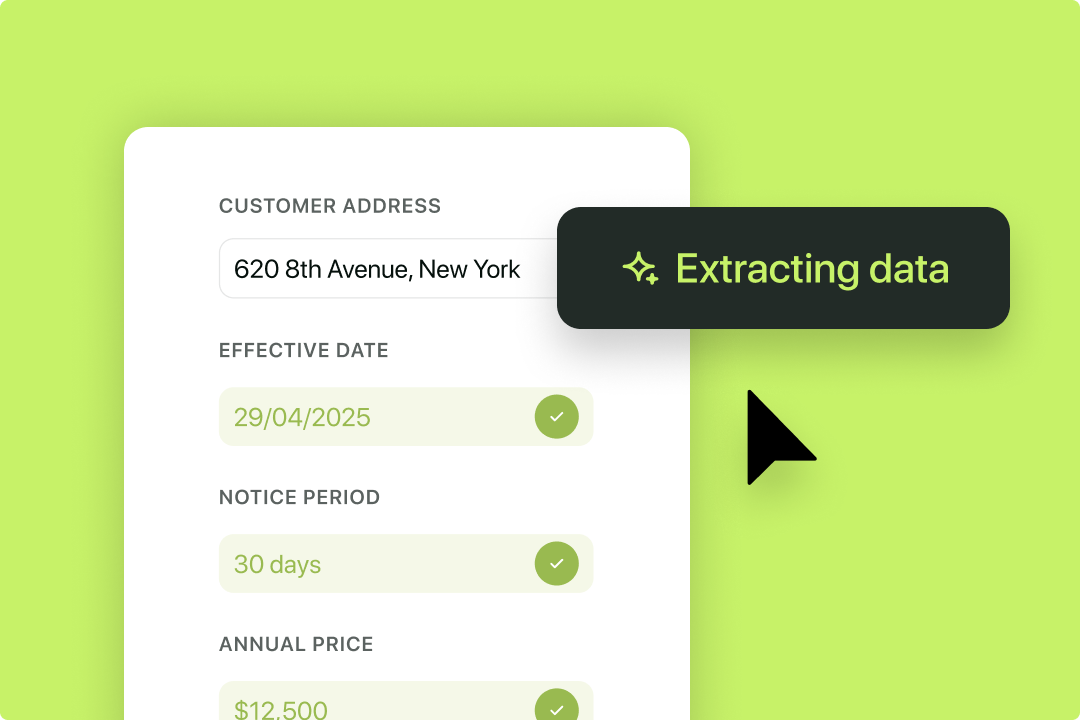Solutions
Customer Support
Resources
Thanks to AI contract readers, legal and commercial teams can now review, understand, and manage contracts in a fraction of the time. These tools use artificial intelligence to read contracts the way a human lawyer would—only faster, more consistently, and at scale.
Whether you're reviewing NDAs, triaging vendor agreements, or preparing for M&A due diligence, AI contract readers help surface key terms, flag risks, and simplify legal language so teams can move faster with confidence.
In this guide, we’ll explore what AI contract readers are, how they work, where they add the most value, and how legal AI platforms like Juro are helping in-house legal teams streamline contract review from end to end.
An AI contract reader is a software tool that uses artificial intelligence (AI) to read legal contracts the way a human lawyer would, but faster.
At a basic level, it can:

An AI contract reader works by using a combination of natural language processing (NLP), machine learning (ML), and sometimes large language models (LLMs) to interpret and extract meaning from legal documents. Here's a detailed step-by-step breakdown of how it works:
The first step is simply getting the content into the system. Whether your contract is a Word document, a PDF, or even a scanned copy, the AI contract reader prepares it for analysis.
Think of it as converting your contract into a format the system can “understand.”
Once the content is readable, the tool scans for common patterns in contracts. These patterns could include:
The AI contract reader identifies and labels different sections to help users navigate the contract more easily.
Next, the system picks out the most important details contained within the contract, also known as the contract data or values. These might include:
This stage helps surface the core terms and obligations that matter most, and most contract readers or AI extraction tools will allow you to customize which datapoints are pulled (and when).
Many AI contract readers are designed to support and reinforce internal policies or guidelines, sometimes referred to as a contract playbook, or a contract management policy.
Depending on what your playbook contains, the tool might:
This makes it easier to enforce consistency and compliance without manually comparing documents. It also acts as a contract review checklist, ensuring your usual checks and balances are followed.
Some tools will help simplify the legal jargon by:
This helps teams across sales, procurement, HR and finance engage with contracts more confidently, even if they don’t have a legal background.
AI contract readers are more than just time-savers…they’re business enablers. Here are some of the key benefits legal and business teams can expect:

Juro’s AI makes contract reading and review effortless for in-house legal and commercial teams—combining speed, structure, and simplicity in one intuitive platform.
From the moment a vendor or third-party contract is uploaded, Juro extracts key terms, clauses, and metadata automatically. It transforms static documents into structured, searchable data, giving teams instant visibility into obligations, risks, and opportunities without lifting a finger.
Unlike general-purpose AI tools, Juro’s contract data extraction is trained specifically for legal workflows. You don’t just get text pulled from contracts, you get reliable, contextual insights you can actually use.
Juro’s AI doesn’t just read contracts—it helps you enforce your policies at scale. You can define your own rules and fallback positions, so every review aligns with your standards.
When reviewing third-party paper or internal templates, Juro’s contract review agent will:

In short, Juro’s AI gives you a faster, smarter, and more scalable way to manage contracts, without adding headcount or complexity.
As you plan your legal tech stack for 2026 and beyond, the right contract review software won’t just speed up legal work. It will empower your entire business to move faster with confidence.
Fill in the form below to see it for yourself.
Lorem ipsum dolor sit amet, consectetur adipiscing elit. Suspendisse varius enim in eros elementum tristique. Duis cursus, mi quis viverra ornare, eros dolor interdum nulla, ut commodo diam libero vitae erat. Aenean faucibus nibh et justo cursus id rutrum lorem imperdiet. Nunc ut sem vitae risus tristique posuere.

